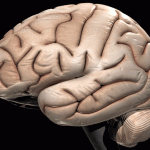What do you do with a student who is inattentive or consistently distracted in class?
Each one of us are constantly being bombarded with information via our five senses (taste, touch, smell, hearing, seeing), yet not all that information reaches our conscious awareness. Each piece of information has to travel through a part of our brain called the Reticular Activating System (RAS). The RAS acts as a filter or a grid only allowing vital information through to our brain and therefore stopping our brain becoming overloaded with stimuli. Sometimes a student can be inattentive or attentive to the wrong thing because their RAS is not allowing the correct information through.
The brain had been programmed to allow certain stimuli through. The main type of information that will always get through the RAS to the ‘thinking brain’ is:
- Anything new or novel. For example a change in environment, a different sound, smell, sight etc.
- Anything that could be perceived as a threat.
Anything else has the potential to be filtered out.
The following two step process will help you as a teacher to engage the brain in such a way that we promote learning and we increase our chances of our lesson content getting past the RAS to the thinking part of the brain?
Once the students have made a prediction the brain will give its whole attention to finding out whether it was correct or not.
Step 1: Remove any elements of what might be perceived by the student as a threat.
This includes all the obvious threats such as peer pressure and the fear of failure but also needs to include some of the less obvious threats such as what will the lesson be about? Will the lesson be too challenging?
Step 2: Engage the brain by providing novel stimuli.
The brain is hard wired to be curious towards anything new. It loves to predict the future and will give full attention to anything that ‘catches its attention’. Some of the strategies that will work are…
- Play some music as the students enter the room
- Wear something different. this could be a hat, jewellery etc
- Change the set up of your room
- Speak with a different tone or pace
- Display a picture that is only loosely associated with the lesson content and have the students predict what the lesson will be about
The possibilities are endless the main thing is that you introduce something new and have the students try and make a prediction. Once they have made a prediction the brain will give its whole attention to finding out whether it was correct or not.











